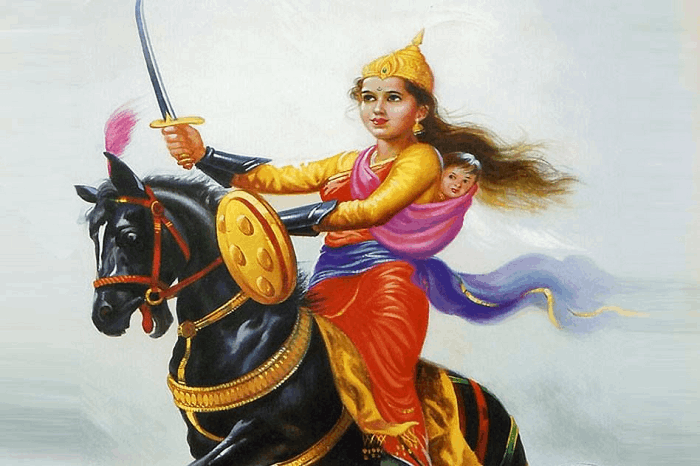Rani Lakshmi Bai - Biography
Rani Lakshmi Bai, often spelled Laxmi Bai, was Jhansi's Rani (queen) and a major player in the Indian Mutiny of 1857–1858. Born in Varanasi, India, on November 19, 1828. She passed away on June 17, 1858, when she was only 29 years old, in Gwalior, India, in the Indian Mutiny of 1857-1858.
Varanasi is the birthplace of Rani Lakshmibai on November 19, 1828. Manikarnika Tambe was her full name, but she went by Manu. Moropant Tambe was her father, and Bhagirathi Sapre (also known as Bhagirathi Bai) was her mother. Her father served as Peshwa Baji Rao II's Commander of War. Contrary to the conventional norms for women in Indian society at the time, she studied shooting, equestrian, and fencing. She was educated at home, was literate and proficient in writing, and was more independent as a child than other children her age.
In 1842, when she was just 14 years old, she wed Gangadhar Rao, the Maharaja of Jhansi. After being married, she adopted the name Laxmibai. In 1853, Gangadhar Rao perished. He had adopted Anand Rao, his cousin's son, and given him the new name Damodar Rao before he passed away.

Lakshmi Bai was raised in the family of Peshwa (ruler) Baji Rao II, which provided her with an unusual upbringing for a Brahman girl. She was raised in the Peshwa's court alongside the males, schooled in martial arts, and honed her riding and sword fighting skills. She wed Gangadhar Rao, the Maharaja of Jhansi, but she became widowed without producing a living heir to the kingdom. Before he passed away, the Maharaja designated a boy as his heir, following accepted Hindu tradition. The British governor-general of India, Lord Dalhousie, refused to accept the adopted successor and instead seized Jhansi following the doctrine of lapse. An East India Company representative was assigned to the little kingdom to handle administrative matters.
The queen, who was 22 old at the time, resisted handing over Jhansi to the British. Lakshmi Bai was appointed Jhansi's regent and ruled on behalf of the minor heir shortly after the 1857 insurrection in Meerut got underway. After joining the rebellion against the British, she quickly gathered her soldiers and seized control of the rebels in the Bundelkhand region. Assembling in Jhansi to support her were mutinies from the surrounding areas. General Hugh Rose's East India Company forces launched their counteroffensive in Bundelkhand around January 1858. From Mhow, Rose advanced, conquered Saugor (now Sagar), and in March, she turned her attention to Jhansi.
The forces of the corporation encircled the fort of Jhansi, and a bloody conflict broke out. Lakshmi Bai put up a brave fight against the invaders despite her troops being outnumbered and another rebel leader, Tantia Tope's rescuing army, had been routed at the Battle of Betwa. Lakshmi Bai, accompanied by a small group of palace guards, was able to escape the fort and travel east, where more rebels joined her.
Tantia Tope and Lakshmi Bai continued their assault on the city fortress of Gwalior after becoming victorious. A well-known commander named Nana Sahib was named the Peshwa after the treasury, and the armory was taken (ruler). Lakshmi Bai marched east to Morar after capturing Gwalior to meet Rose's British onslaught. She engaged in a bloody fight while dressed as a guy and lost the war.
The 1857 Revolt Participation of Rani Lakshmi Bai: Things to Know
- The fact that the Maharaja had no natural heir prevented Lord Dalhousie from using the Doctrine of Lapse to conquer Jhansi after his death.
- The Rani was consequently given a yearly allowance and instructed to leave the Jhansi fort.
- As her little son's guardian during Meerut's Revolt of 1857, the Rani ruled over Jhansi.
- In 1858, British forces under the command of Sir Hugh Rose arrived in Jhansi to capture the fort. If the city didn't bow to him, he said he would destroy it.
- We strive for independence, Rani Lakshmibai stated in response to the refusal. According to Lord Krishna, if we win the battle and reap the rewards yet lose and perish in the fray, we will undoubtedly gain redemption and eternal glory.
- The Rani bravely led her army of soldiers, both men, and women, in the two-week struggle against the British. Jhansi put up a brave fight but was defeated.
- The Rani rode forth to Kalpi while carrying her young son in a sling.
- Along with Tatya Tope and other rebel soldiers, the Rani took control of the Gwalior fort.
- She then traveled to Morar, Gwalior, where she engaged the British in battle.
- On June 18, 1858, Rani Lakshmibai only 30 years old, lost her life in battle in Gwalior. She died while donning a military outfit.
Legacy
According to Sir Hugh Rose, "Of All the Rebel Leaders, she had been the most dangerous because of her remarkable beauty, wit, and determination. The best and bravest of all. Later Indian nationalists used Rani Lakshmibai to represent their opposition to British rule. She will be revered forever as a heroic martyr who gave her life to further freedom. She represents bravery, heroism, and the strength of women.